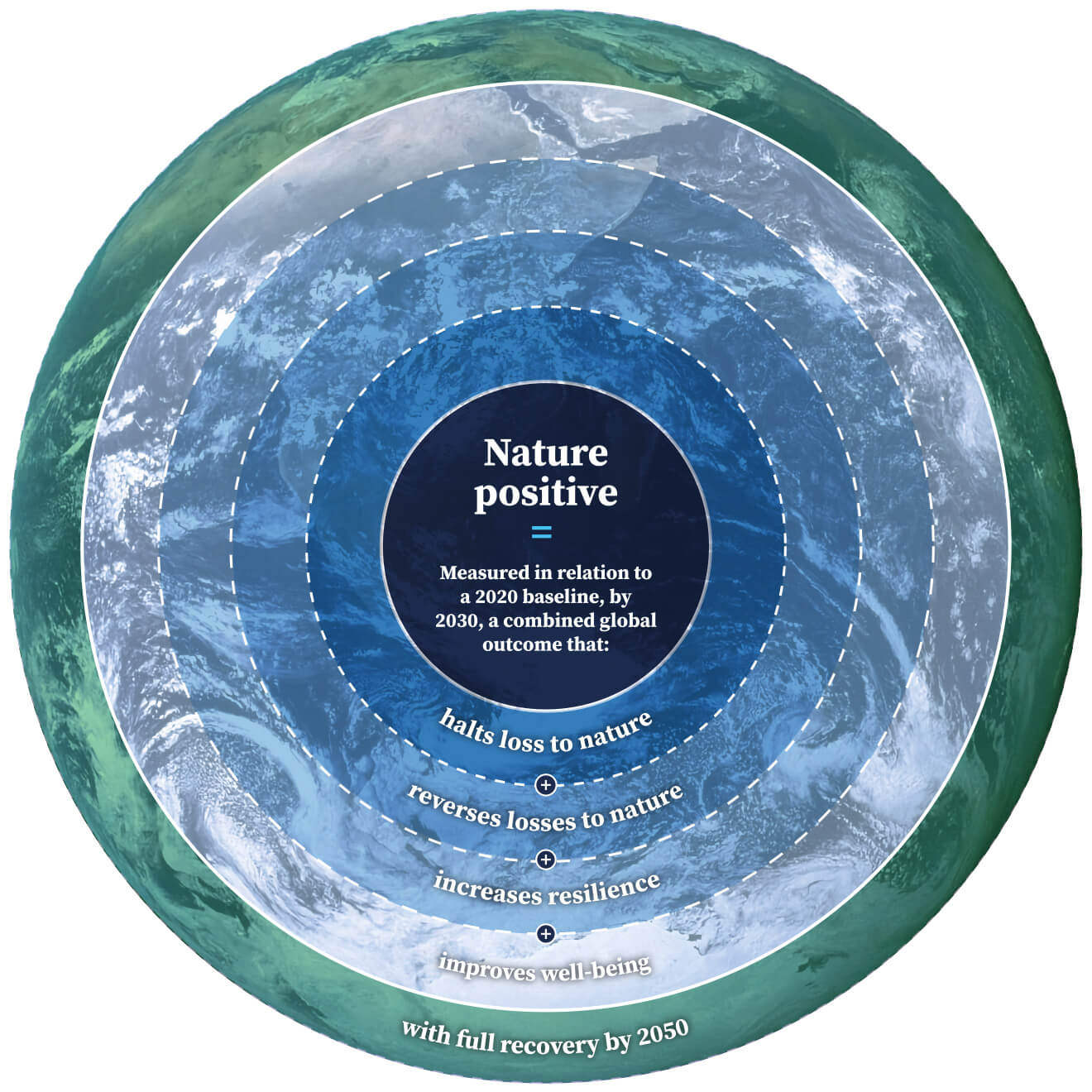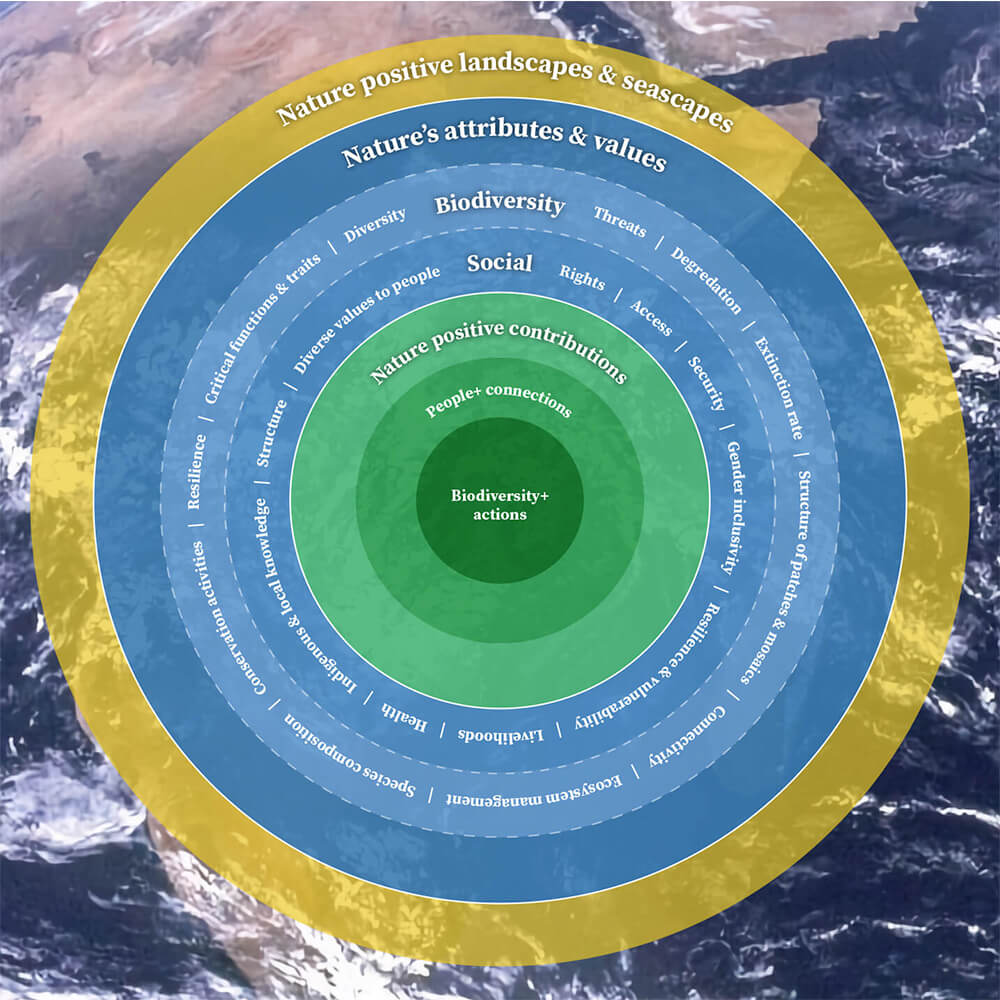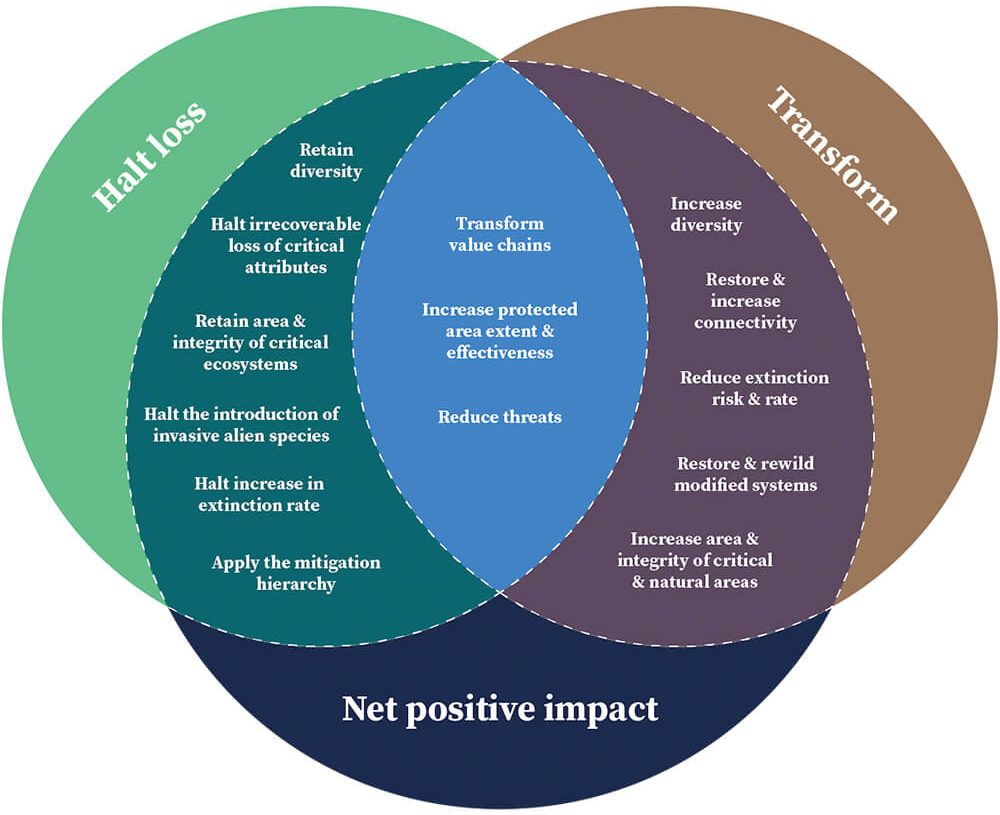Net positive impact for biodiversity and nature positive have some overlap but there are key differences in what they mean and how they can be delivered. It is important to understand this to support the development of ambition, strategies and plans that drive and maximise positive outcomes. The starting point is to understand what is meant by each term and how delivery of these goals can be achieved in practice.
Net gains is often used interchangeably with net positive impact. It requires actions to be taken that lead to gains that are measured related to the losses that may result from activities. Losses should relate to a change in ecosystem integrity so that measures can be appropriately framed related to a justifiable position of no net loss. Net gains can be delivered for individual projects or be cumulative across all operations and value chains.
Operationalising a net gain approach generally involves the application of the mitigation hierarchy, whereby options are sought to exhaust the potential for significant residual impacts at each step. The determination of significant impacts relates to a measurable change to ecosystem integrity. Lesser impacts that do not significantly affect ecosystem integrity will effectively achieve no net loss. Where significant residual impacts remain after the application of avoidance, minimisation and restoration then offsets may be used to create no net loss and then deliver net gains. Offsets by definition are actions that address significant residual impacts. If no significant residual impacts are expected prior to applying offsets, then no net loss has been achieved, and offsets are not required to achieve net gains. In this situation, on-the-ground Measurable Additional Conservation Actions (MACAs) can be used to deliver net gains. Such actions sit outside of the mitigation hierarchy but are triggered through the robust application of mitigation steps – as they are only applied when no net loss is achieved. Although MACAs are not measured against residual losses, measurable net gain outcomes are still required. A key challenge when defining MACAs is determining the extent of actions, especially when considering how broad ecosystem-based outcomes may be delivered.
Therefore, net gains are not only delivered through offsets. Of note, if offsets are required this introduces significant complexity in achieving net gains for marine biodiversity. This is partly due to the absence of an agreed set of metrics and the ability to measure losses and gains in a way that takes account of the inherent complexities and interrelationships that occur across multiple processes and attributes. Achieving net gains through MACAs removes some of these issues as gains do not need to be measured against losses. It also gives greater flexibility to deliver actions that do not need to align specifically with offset principles. Whilst such principles are important for offsets, they can create paradigms that limit the potential for ecosystem-based and transformative actions. Therefore, delivering net gains without using offsets should be sought wherever possible.
This is why it is very important to emphasise the role of robust application of the mitigation hierarchy in operationalising net gain approaches in the marine environment. The aim should be to try to ensure no net loss to ecosystem integrity, ideally without offsets, as this is the easiest path to designing and achieving net gains that have a good evidence-base.
As a net gain outcome is framed by the balance of losses and gains that can be measured, a project, plan or organisation can aim to have a net positive impact.
Nature positive was developed by the Global Goal for Nature Group as an umbrella goal for the recently approved Global Biodiversity Framework (GBF). Although the term didn’t make it into the text of the GBF, many of its components remain intrinsic to the mission. The goal relates to a combined societal outcome that halts and reverses nature loss by 2030 measured against a static baseline of 2020, with full recovery of functioning ecosystems to safeguard the stability and resilience of life on Earth by 2050. Whether the goal for nature positive can be met is dependent on a range of actions that cumulatively contribute to reaching these desired outcomes. Achieving the reversal of biodiversity loss to meet the goal requires the delivery of broad-scale and interconnected outcomes and the ability measure these.




